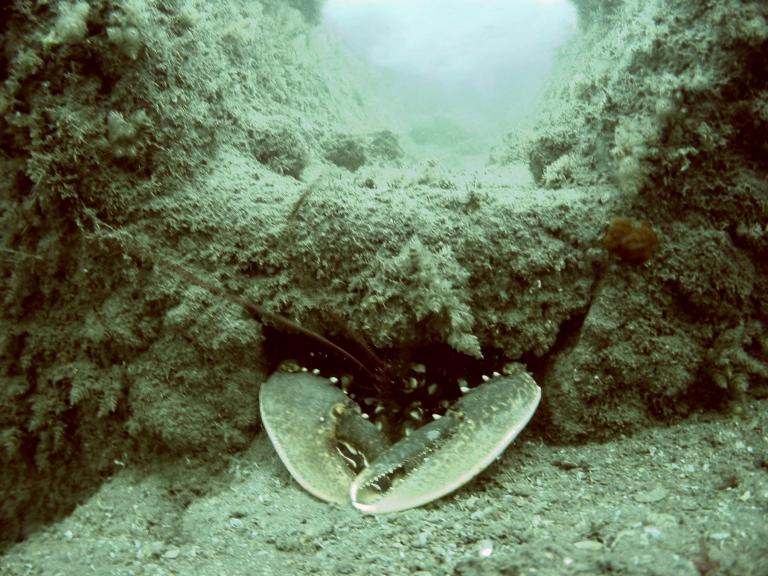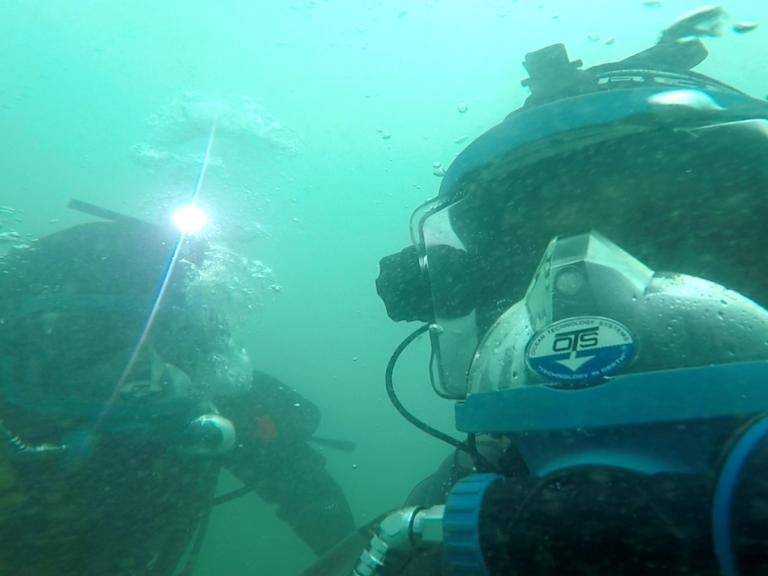The Iona II was originally built as a fast ferry for the Clyde with a specially designed twin cylinder oscillating engine that reputedly gave a top speed of 24 Knots. Then in 1864 the Iona II was acquired by Charles Hopkins Boster of Richmond Virginia to operate as a blockade runner for the Confederate Forces in the American Civil War. During the Iona II first Trans-Atlantic voyage it sank to the east of Lundy, and contemporary accounts describe a surprisingly intense salvage for a 'general' cargo.
A substantial portion of the Iona II remains exposed on the seabed including the four boilers, engine workings, the crank shaft, two disarticulated paddle wheels and a large amount of coal. The stern section of the site is severly damaged and most of the expected fittings have been removed from the wreck over the years.
The site was designated in 1990 under the Protection of Wrecks Act (1973), it is administered by English Heritage and the licensee monitors the site.
Wessex Archaeology's diving investigations
In 2004 Wessex Archaeology undertook a non-intrusive diver survey to facilitate the management and understanding of the site. The survey consisted of taking measurements and photograph's in order to monitor the condition of the wreck and its features. Along with the survey Wessex Archaeology assessed the site to determine the areas that would be suitable for monitoring sediment level and structural collapse.
To find out more visit the Case Study page.




